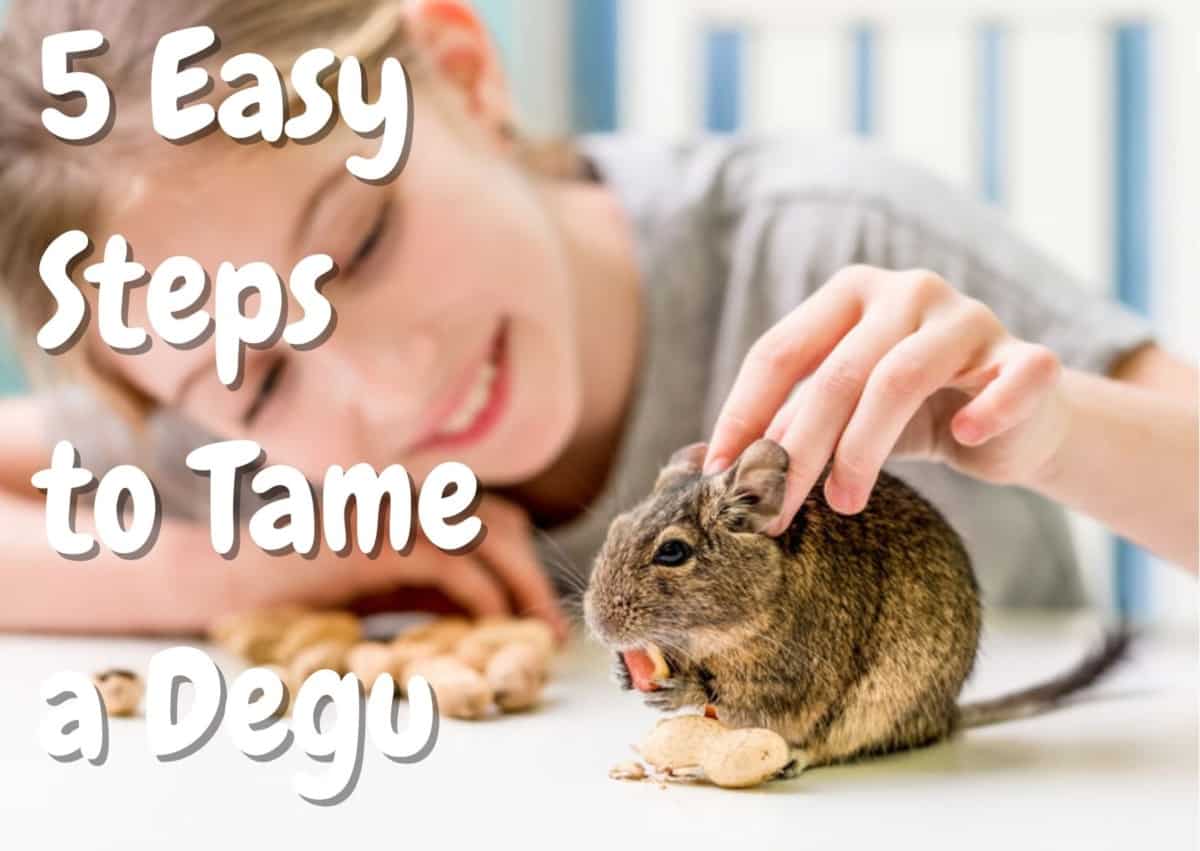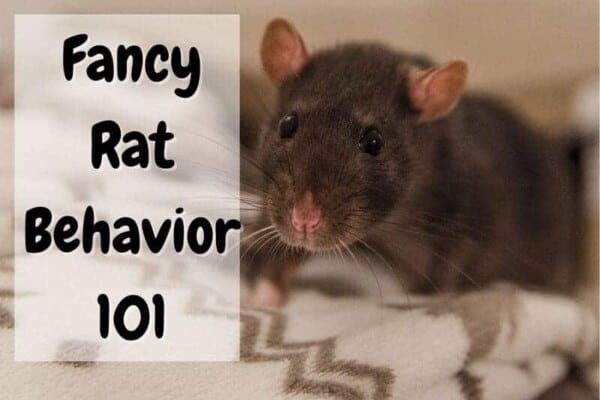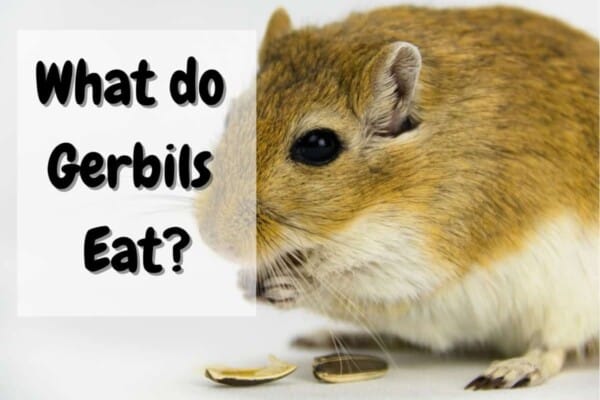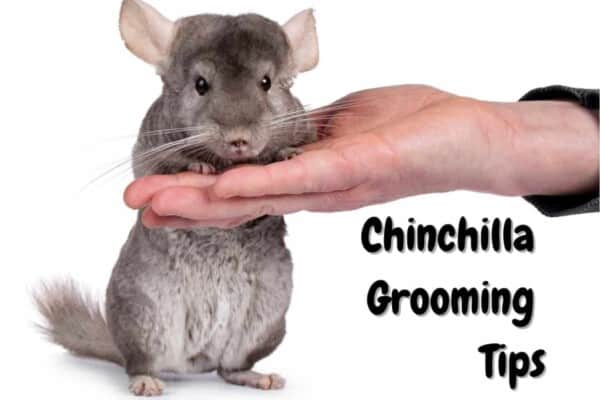Degus are by nature, nervous little creatures that react to sound and movement around them. So when it comes to taming them, there are specific steps that will make them more comfortable with you. Here is what you need to know to allow your degu to be your best friend in just a few practical steps.
5 Practical Steps to Tame a Degu – A Complete Guide
To start taming your degus, it all begins with getting them used to you. If you don’t, they won’t accept your presence and will react as they would in the wild. This is going to take time, so be patient and follow each of these stages accordingly.
1 – Be around their cage every day
Even if new degus are comfortable inside the cage you have set up for them, they will still react to you being near them at first. They will naturally want to hide and warn others of anything that might harm them. So the first step is to sit in the room next to their cage.
Simply ignore them and don’t let them know that you have an active interest in them. They will be watching you very closely and can see if you’re looking at them. As hard as this is to resist, you’ll need to calmly go about doing any other activity besides focusing on them.
As a further tip, simply have your back to them so they cannot see your face at all. But the most important part is sitting very close to their cage so they can get used to how you smell. Do this for 30 minutes to an hour at a time and read a book or listen to some music at a low volume.
You need to do this at scheduled times since degus are very keen to pick up on routines. Select a time and stick to that time every day to sit next to their cage. This way they will come to expect you to be there at the same time every day after that.
When your degus start going about their daily task and activities without fear of you being next to them, you can move to the next step. This means they are comfortable with you and don’t perceive you as a threat. This will be evident if they are playing, running around, and eating in their cage.
2 – Have a chat with them
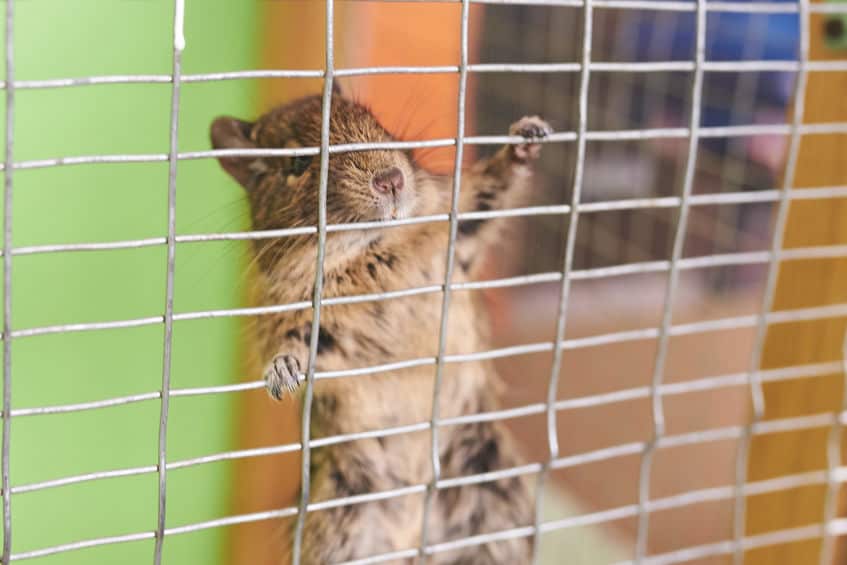
Now that your degus exhibit normal behavior and become content with resuming daily activities, it’s time to take your introduction to the next level. At this point, you can start to have facial contact with them. This might not work at first because they are still not familiar with you soo they might run and hide.
Just turn your back and wait until they come back out and start doing their regular business. It might take many attempts before they’re used to you watching them. When you finally have their trust you can start to interact with them.
Start this by softly talking to them in a calm and friendly manner. This will be odd for them so once again, take your time and just say a couple of words at first. This is so they get an idea of what your voice is sounding like.
Sooner or later your degus will become adjusted to your voice and this won’t be considered a threat to them. Once they know it’s only you, they will come around sooner or later and will relax.
It does help to have some kind of background noise that is somewhere in the room. If you like listening to music, the volume shouldn’t be any louder than your speaking voice. What this does is help to break up the sound difference in the room so they are more tolerant of you.
3 – Give them treats
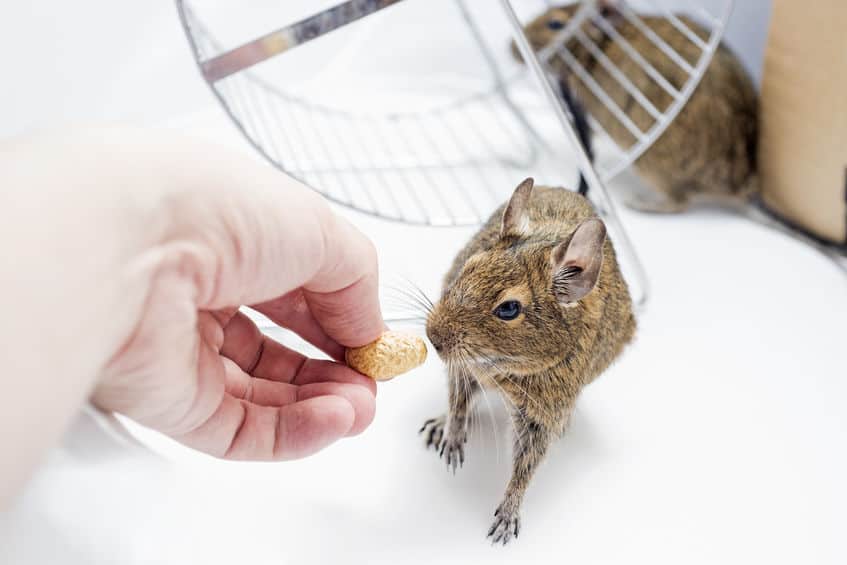
One thing that will be important to make degus comfortable with your hand near them is to put your hand on their cage from time to time. They might scurry away but not for long. They are already familiar with your scent, so having a hand on their habitat will be vital to giving them treats.
Giving them treats all starts with avoiding opening the cage door. You want to get degus used to receiving treats through the cage bars. There is a good reason to do this and the first point is not getting bitten.
Your degu is going to be better off knowing they are safe, so offering a treat at the edge of the cage is advised. It will be their curiosity that compels them to see what you are holding, and that’s part of the fun. When they see you have no bad intentions, they will be happy to snatch a tempting treat from your fingers.
Once degus understand that you are giving them treats, they will be back for more. They will also understand that these are special gifts for them. They will also become crafty masters at waiting at the edge of the cage to get a treat after this. This is when you can be confident enough to go to the next step.
4 – Open the cage door
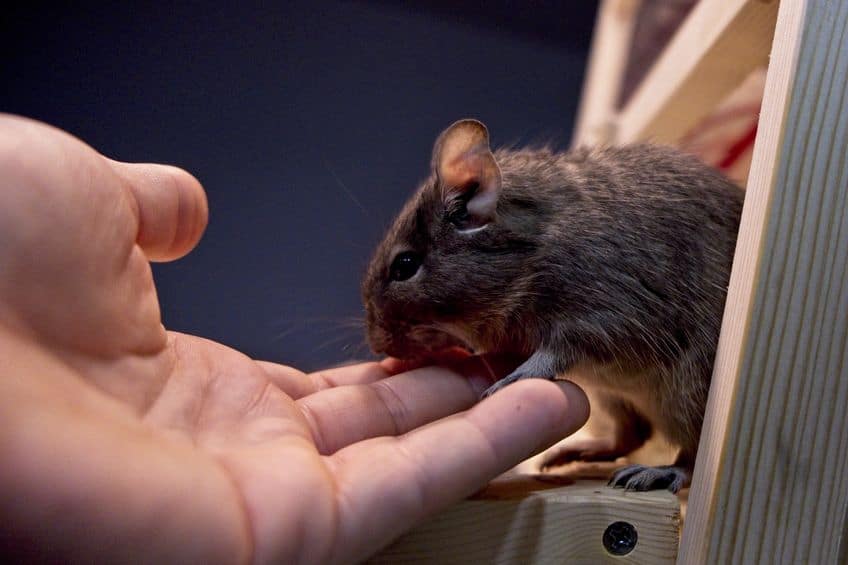
This is the biggest step since they will need some time to adjust to their habitat being breached. They have spent so much time feeling safe with nothing entering their cage, so an open door can be unnerving for them. It might take a few attempts before they are brave enough to roam around without fear.
Now, don’t give them treats where the door is open no matter what. Give them treats at the same spot at the edge of the cage. Slowly change that position bit by bit getting closer to the open cage door.
They will adjust to the location since they want that treat you are giving to them. It takes a lot of work to get to the cage entrance, so be patient at this point. As long as you don’t put your hand into the cage, degus won’t ever think you are invading their living space.
When you finally get to the cage door, just offer it the same way you have been doing all along. Your degus will be comfortable enough to stand at the cage door when you offer your treat as usual.
5 – Hand training and taming
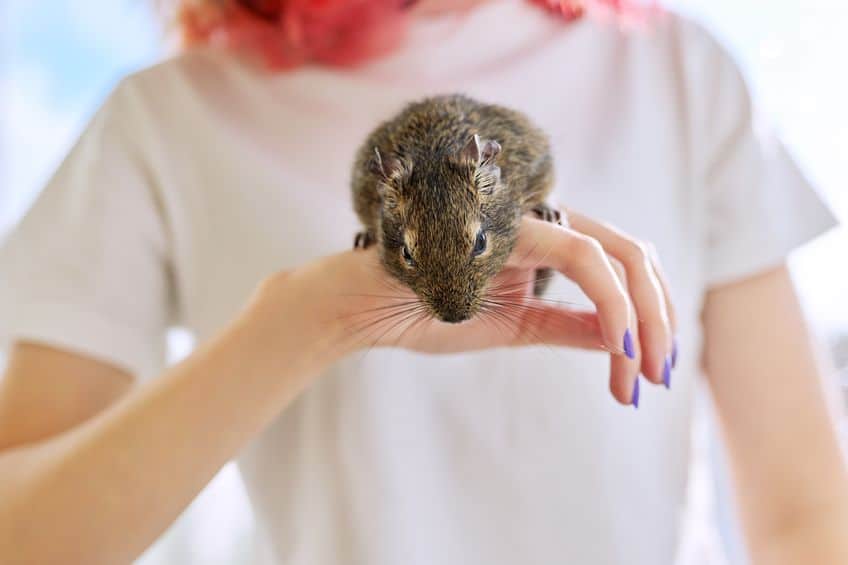
This is the final stage that you need to be extra patient about when feeding a treat to your degus. The point here is to help them to be comfortable with crawling onto your hand to take a treat. You can place the treat on the tip of your finger and slowly move these treats toward the center of your open palm.
The point is to not put your hand into their cage. Let them come to you on their own terms and that means getting them to come out of their cage.
It won’t change the fact that they will be jumpy and nervous, but they will get enough nerve to venture out to get their treat. If you can master having them walk onto your open hand for a treat, it opens the door for further training. The best success you will find is if they feel comfortable enough to eat their treat in your hand.
The next step is to calmly try to pet their back or their fur. If you’ve washed your hands they will not be tempted to bite. If they are comfortable being in your hand, it’s just a matter of time before they can be better trained.
If they are brave enough to come onto your hand, this is already a sign that you’ve earned the first major step in taming them. The rest is merely repetition and trust that comes from holding them. Always keep in mind they are going to be nervous about anything new you try.
Do degus like to be handled?
While degus cannot be totally tamed, they can tolerate it on their terms by gaining trust. They will climb onto your hand but probably won’t like being held for very long.
Degus are rodents and as such, they will like to roam wherever they feel is safe for them. This is why some degus will be content to sit on your lap, while others like being on your shoulder. You can’t keep them in one spot for long unless they want to stay in that area.
Some degu owners will find that their degu will fall asleep in a shirt pocket, pullover hood, or soft jacket pocket. They aren’t exactly a perfect pocket pet since they do need to stay in their cage most of the day. This is where a degu will feel the safest for the most part.
Degus will tell you when they don’t want to be held by nibbling on your fingers lightly. It takes lots of time before they are comfortable being picked up, but will always repeat the same motion they have learned from the beginning.
Do degus like to cuddle?
This will depend on each degu that you own and how much you handle them. If you’ve gained their trust, they will be open to having a tummy rub or head scratch. They will also be open to cuddling in your hand or on your lap. There are times that degus will be content to take a nap in your pocket or sit on your shoulder under your hair. If you can consider this cuddling, it will show how comfortable your degu is to be around you.
Degus all show affection in various ways and will cuddle with other degus in their cage. They will show this through grooming, so if they are grooming your hand, this is because of their affection toward you. Don’t expect they will want to snuggle in your hand, since this is not really part of their normal behavior.
Any degu that comes to you for a treat is absolutely showing their affection. If you don’t give them a treat, they will show you their dislike immediately. But then again, this will vary from degu to degu. If you’ve taken the time to bond with your tame degu, they will ultimately be very affectionate to you.
Can you train a degu to do tricks?
Degus are very clever about learning to do tricks provided there is always a treat. The key to this success is repetition. It is also important to include a sound or noise they will associate with the trick.
This can include tapping or snapping your fingers and making mouth noises like kissing sounds or whistling. If you use voice commands, it needs to be a simple word or two to assign to that specific trick. For example, if you say ‘stand-up’, this can be used for standing on their hind legs.
They can learn several tricks and learn several command words, provided you spend enough time teaching them. Degus will also give you that ‘murder stare’ if you ask them to perform a trick without a treat. They are very serious about getting a reward for doing any trick, so don’t expect to cheat them.
Impressively, you can teach degus more than 10 different tricks or more if they’re in the mood. They will also need a fair amount of repetitive training to get them to learn these tricks. Some owners like to teach their degu to climb up onto their shoulders, just like you teach a pet rat.
Read Also:
Resources and further reading:

